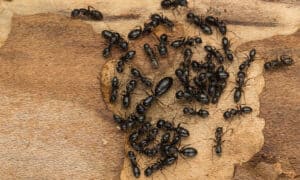Regarding pets, ants are considered a peculiar choice to some people. Those fascinated with the insect world believe otherwise. Insects and “creepy crawlies” have become popular pets in the last few years, with many gaining popularity through social media. Ants, however, remain popular among children due to their interesting nest-making and teamwork. One of the coolest pets a kid can have that requires very little maintenance is an ant farm. It can be expensive if you go for extravagance, but it certainly doesn’t need to be. Many ant farm beginner kits come with beginner-ranked ants that are easy and affordable to keep. This article will explore the ant pet trade and cover which are the cheapest ants to keep as pets for beginners.
9. European Fire Ant (Myrmica rubra)
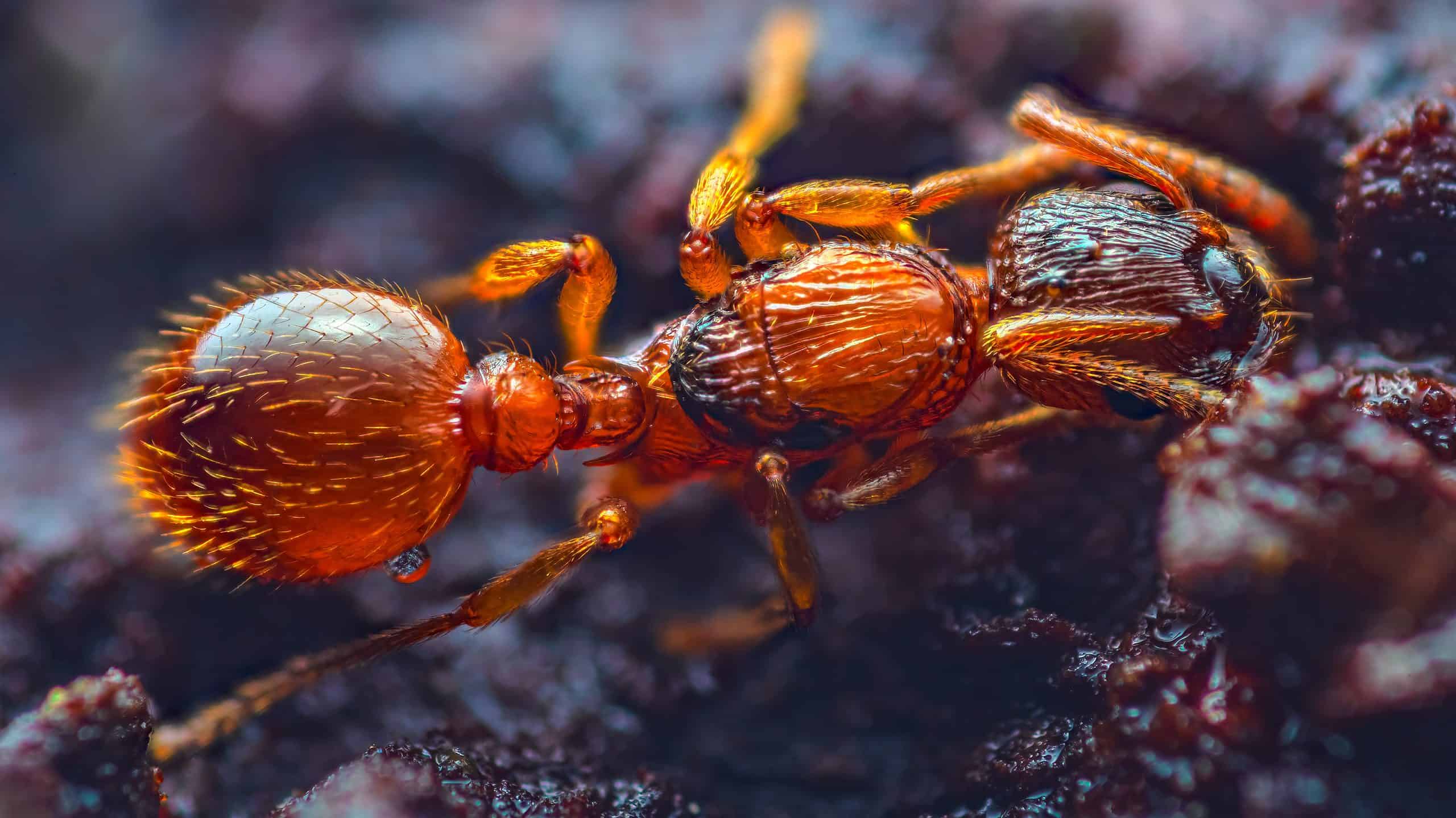
Fire ants are fierce and will sting when provoked.
©Lukas Jonaitis/Shutterstock.com
The European fire ant is an invasive species in the northwestern and northeastern U.S. They are very common throughout Europe. These ants, like all fire ants, do sting; however, different people have varying mild reactions. They make good beginner ants, especially if there is no reason to handle them. The fire ants are medium-sized at 5 – 6 millimeters long.
8. Silky Ant (Formica fusca)

The silky ant is not aggressive, and their attacks do not hurt.
The silky ant is a slightly more complicated colony to raise but is still manageable. They need a more humid enclosure that is fungus-resistant. A humidity sensor is important to keep the colony at the right level. These big ants are found throughout Europe, southern Asia, and Africa. Their preferred diet is sugar or ant jelly. They are fun to watch because of their quick pace and 10-millimeter size.
7. Black Trail Ant (Iridomyrmex bicknelli)
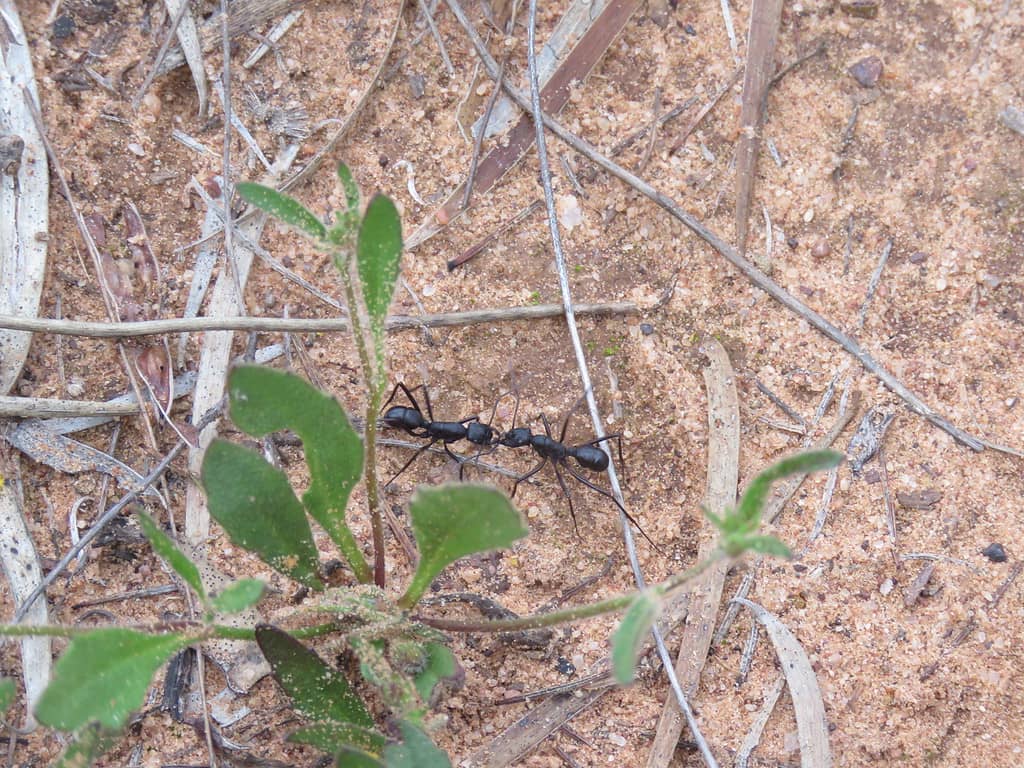
Sometimes, ants have disagreements, like these two pictured.
The black trail ant is the most common ant in the country. They are 5 millimeters in length and prefer sandy environments. They require low humidity, and the colony can live for 10 – 15 years with proper care. The ants eat sugar and dead insects. This species is only found in Australia, making it extremely important never to let them go anywhere except for Australia. Invasive species cause huge problems for native wildlife when released in an area not native to them.
6. Carpenter Ant (Camponotus spp.)

Carpenter ants are fun to watch because of their large size.
©Andrew Meeds, CC BY 4.0, via Wikimedia Commons - Original / License
The massive carpenter ant is found worldwide and is often the largest ant you’ll see in everyday life. These ants can grow to be 1 inch long, so a larger nesting container (formicarium) is necessary. The oldest queen on record clocked out at 26 years old! The colonies typically survive 15 years. The larger (major) workers may bite if provoked, though none have stingers. These are a great choice, but they need much larger formicariums than some of the smaller types.
5. Immigrant Pavement Ant (Tetramorium immigrans)
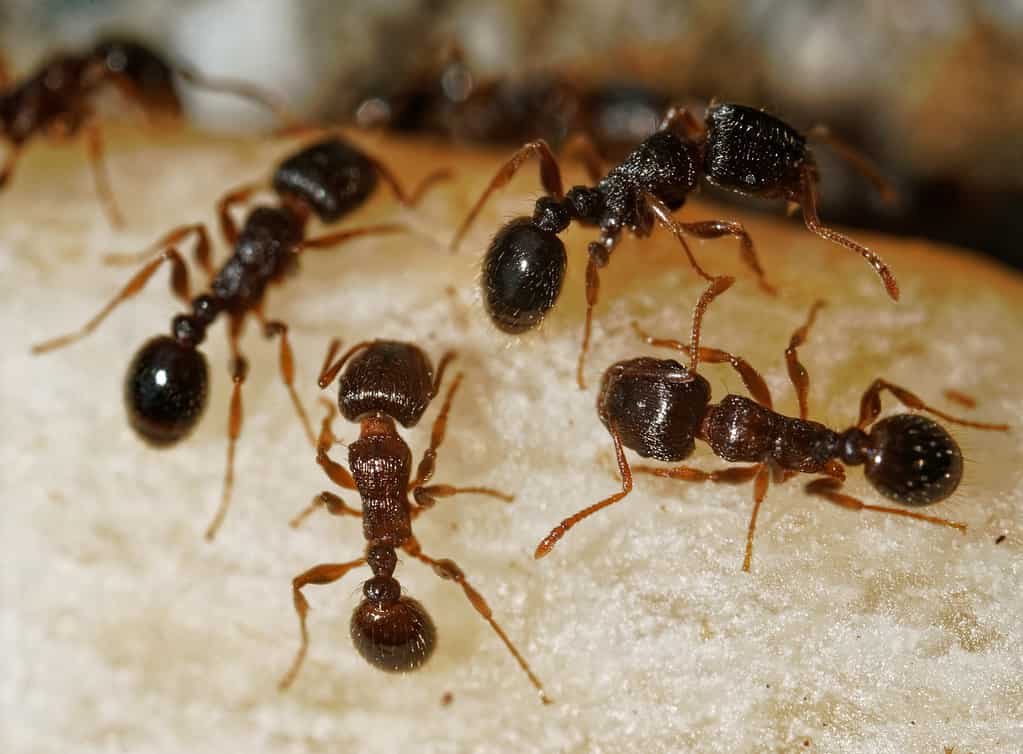
The immigrant pavement ant is originally found in almost all areas of Greece.
The Immigrant pavement ant workers are 4 millimeters in length and can sting. They require a small amount of humidity to survive. This is another invasive species to the U.S., in which care needs to be taken to ensure they are not released. Their name comes from their likeliness to form colonies under the sidewalk pavement. This is a colony that can grow quickly.
4. Barbary Harvester Ant (Messor barbarus)
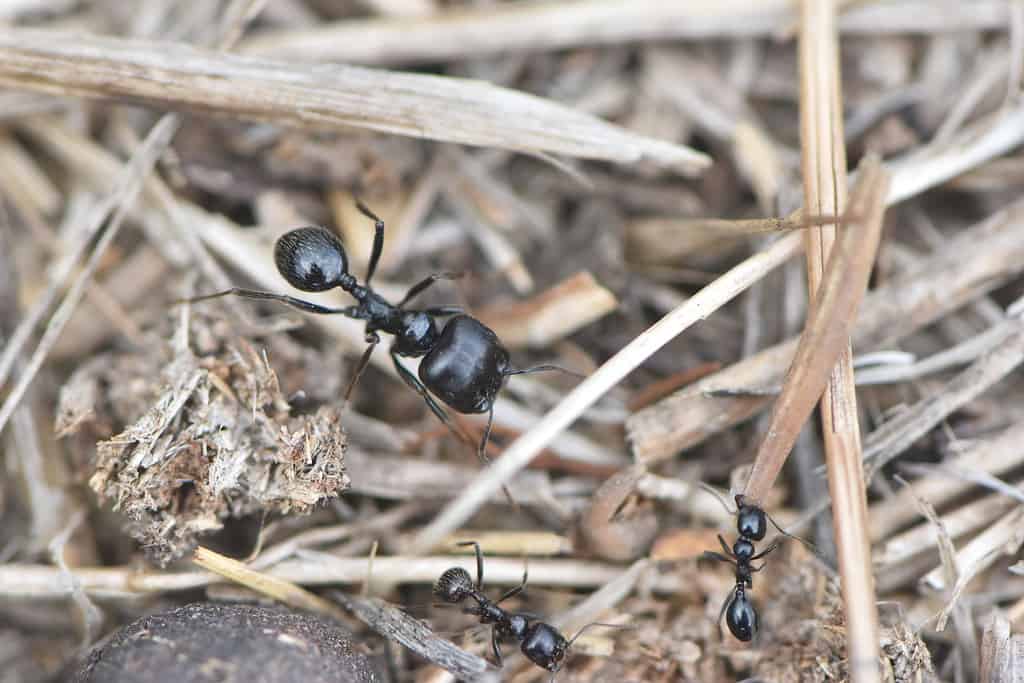
The large barbary ants create large nests and store seeds.
The barbary harvester ant is native to Northern Africa and Southern Europe. They are larger ants, and though they do not sting, they can bite you. The workers can grow to be 13 millimeters long. These ants are also commonly called seed ants due to their willingness to harvest seeds in their nest. The queens of this species can live to be 15 years old.
3. Harvester Ant (Veromessor pergandei)

Native harvester ants are hardy and make a great beginner ant farm colony.
Harvester ants are larger than some at 8 millimeters long with large mandibles. These ants predominantly eat seeds, which are easier to accommodate than dead insects. They also store the seeds in their nest, requiring infrequent feedings. Since they are accustomed to a lack of humidity in their environments, they can live for a long time with very little maintenance. These ants are native to Mexico and North America.
2. Longhorn Crazy Ants (Paratrechina longicornis)
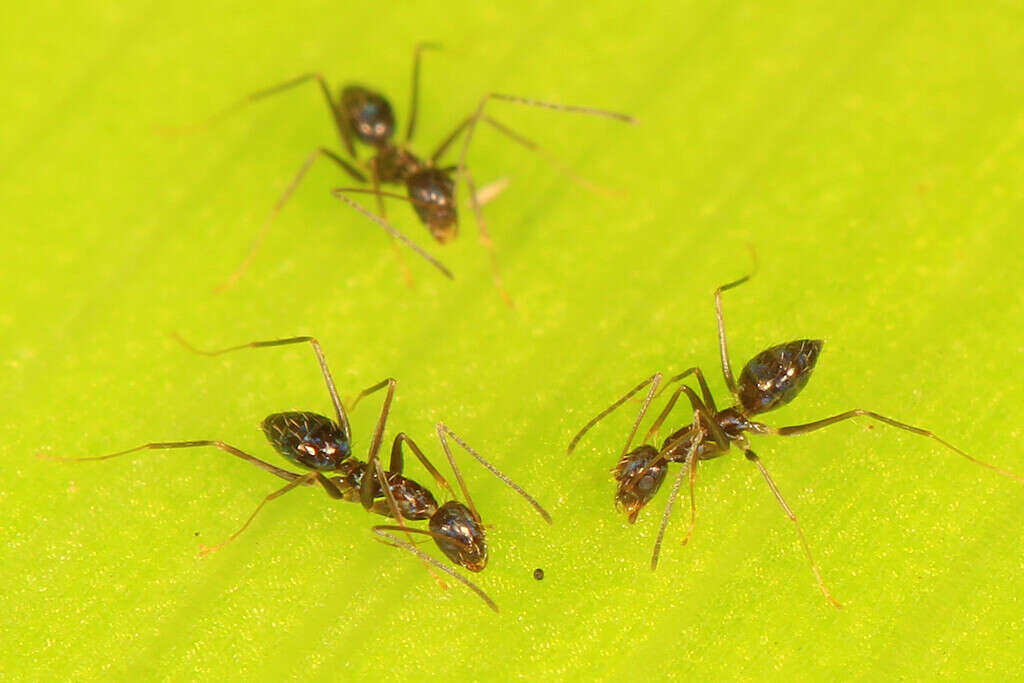
Longhorn ants are the easiest and most inexpensive to care for.
The longhorn ant originated in India but has reached North America, South America, Africa, Australia, Asia, and Europe. They are also called black crazy ants in many places. The ants are very fast and erratic with their movements and have long antennas. They are fun to watch on an ant farm and can be released outside if you decide it’s not for you. They are especially great for newbies because they do not bite or sting. These tiny ants are only 3 millimeters long and make small to medium-sized nests, which doesn’t require much space and saves you money in the end.
1. Black Garden Ant (Lasius niger)

Black garden ants are a great, hardy beginner ant farm choice.
The black garden ant is an extremely hardy ant that can handle times of drought and a lack of food. Of course, you don’t want to cause them this stress if you can help it. They require a somewhat moist nest but can live for 15 years if cared for properly. The ants are miniscule at 3 – 5 millimeters long. Their diet consists of sugary food and dead insects.
The photo featured at the top of this post is © Evgen_Prozhyrko/iStock via Getty Images
Thank you for reading! Have some feedback for us? Contact the AZ Animals editorial team.





